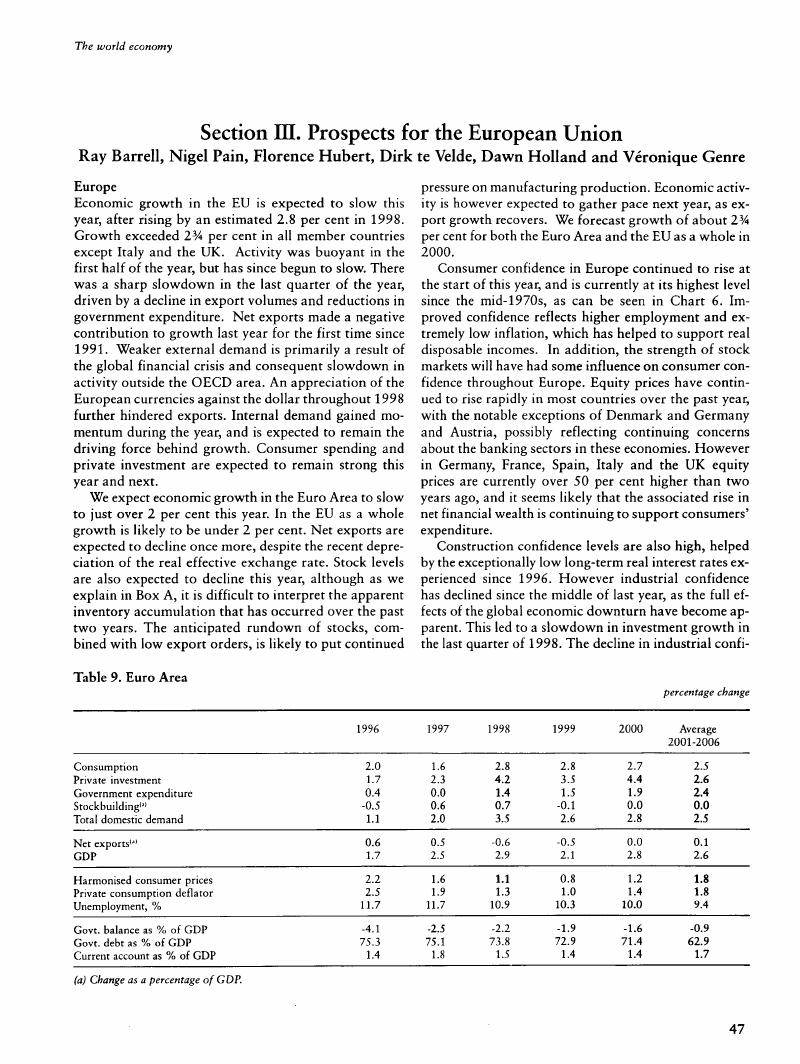No CrossRef data available.
Article contents
Section III. Prospects for the European Union
Published online by Cambridge University Press: 26 March 2020
Abstract

- Type
- The world economy
- Information
- Copyright
- Copyright © 1999 National Institute of Economic and Social Research
References
Notes
(1) Between 1975 and 1995, whole economy labour productivity per hour rose by 1 per cent per annum on average in the United States. Capital productivity, defined as GDP relative to the net fixed capital stock, rose by 0.4 per cent per annum on average. Over the three years 1996-98, labour productivity rose by 2 per cent per annum and capital productivity by 1 per cent. The latest available numbers for the capital stock are for 1997. We estimate that the net capital stock at 1992 prices rose to $19.8 trillion by the end of 1998.
(2) Stocks now account for around 39 per cent of household financial assets, after taking account of indirect holdings through mutual funds and other financial institutions.
(3) See the speech ‘Thinking About Y2K’, by Governor Edward Kelley, available at http://www bog.frb.fed.us/boarddocs/speeches/current/19990325.htm
(4) In their recent report Strategies For Reviving The Japanese Economy, the Economic Strategy Council of Japan assume that the medium-term trend rate of growth of real GDP is just 2 per cent per annum. If so, nominal growth of 4½ per cent would imply inflation of 2½ per cent per annum, which may be somewhat high.
(5) This is based on the data currently issued by the Federal Statistical Office. The Bundesbank, which provides alternative data that incorporate additional calendar year adjustments for the number of working days, estimates that growth was just 2.5 per cent.


